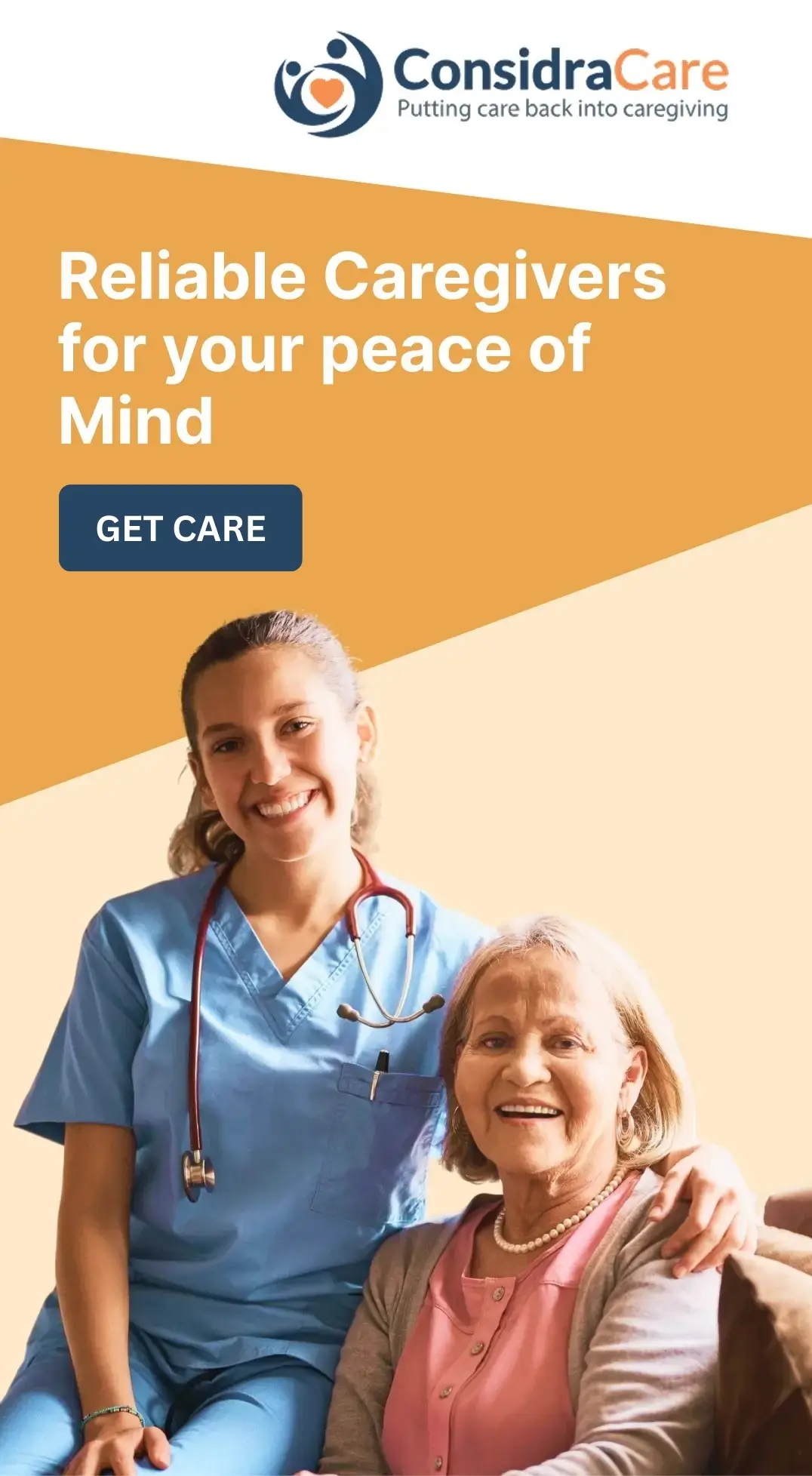If you’ve observed this, keep an eye out for recurring lung infections, including pneumonia or bronchitis, as well as symptoms like a persistent cough with phlegm, wheezing, and shortness of breath.
Caring for seniors with Chronic Obstructive Pulmonary Disease (COPD) can be challenging because it requires critical care in multiple aspects—medication management, oxygen therapy, and lifestyle modifications. We are here to make your caregiving journey easier, so read on to learn how you, as a caregiver, can help with COPD treatment.
When Caring for a Person with COPD, You Should?
1. Learn Everything You Can About COPD:
It’s important to understand what your loved one is going through. If you’re new to caring for someone with COPD, here are some key steps to help you get started:
- Understand the different types of COPD: Take the time to learn whether they have chronic bronchitis, emphysema, or both. These are the main forms of COPD, and knowing which one (or both) they have will help you better support their specific needs.
- Get familiar with the symptoms: It’s essential to recognize the signs of COPD and what to look out for when symptoms worsen. COPD is a progressive condition, so if you notice any changes or flare-ups, make sure to reach out to their doctor.
- Know how COPD progresses: As the disease moves through different stages, their care needs will change. Being aware of how COPD progresses will allow you to adjust to those changes and ensure they receive the best care possible.
2. Ensure medication adherence:
Your loved one will likely be on medications to manage their COPD, including inhalers, bronchodilators, and possibly steroids. As a caregiver, one of your primary roles will be ensuring they take their medications as prescribed. Here are a few ways you can assist:
- Set up reminders: Keep track of medication times with a smartphone app or a physical chart.
- Assist with inhalers: Some people may struggle with using inhalers properly. Be sure to follow up with their healthcare provider to confirm the right technique.
- Monitor side effects: Be vigilant about any changes in their condition, and communicate any concerns to their doctor.
Being close to them every day and caring for them means you are in a position to notice any changes in their condition or how their body is reacting to medication. It’s your responsibility to report these changes promptly.
3. Monitor oxygen levels:
Seniors with severe COPD may require oxygen therapy. It is essential to monitor their oxygen levels regularly and ensure they use their oxygen as prescribed.
- Make sure you know how to properly use and care for the oxygen tanks or concentrators.
- Avoid open flames, like candles, and ensure no one is smoking near the oxygen equipment.
4. Help Maintain a Healthy Lifestyle:
Seniors with COPD can benefit from healthy habits, such as regular exercise, a balanced diet, and smoking cessation. Encourage them to engage in physical activity as much as possible, even if it is just a short walk around the house.
- Nutrition: Proper nutrition can significantly improve lung function. Prepare healthy meals rich in fruits, and vegetables, and make sure to include a good source of protein at least twice a day. Avoid overly processed and salty foods that may cause fluid retention and discomfort.
- Exercise: Light exercises like walking and breathing exercises can improve lung capacity and overall well-being. Always check with a doctor first to establish what type and intensity of exercise is safe.
- Hydration: Encourage them to drink plenty of fluids, as this can help thin mucus in the lungs, making it easier to breathe.
5. Manage Triggers and Environment:
People with COPD are more sensitive to environmental factors. You can help by managing triggers in their surroundings:
- Air quality: Keep the air clean by using air purifiers, reducing dust, and avoiding exposure to smoke, strong fragrances, or harsh cleaning chemicals. Regularly ventilate the home to improve indoor air circulation.
- Temperature control: COPD patients may find it harder to breathe in extreme heat or cold, so maintaining a comfortable indoor temperature is crucial. Use humidifiers to maintain optimal humidity levels, as excessively dry air can irritate the lungs.
- Limit allergens: Minimize exposure to allergens like pet dander or mold by regularly cleaning surfaces and using hypoallergenic products.
- Reduce stress: Create a calm, relaxing environment. High-stress situations can make breathing more difficult, so consider relaxation techniques like soft music or low lighting to reduce anxiety triggers. Light exercises and stretching also help in reducing stress.
6. Provide Emotional Support:
A caregiver’s energy can greatly impact the patient. For that reason, your role goes beyond just physical care—you are their cheerleader. They may feel mentally and physically drained, and at times, they might not want to take their medication on time or follow a proper diet. During these moments, you are their all-in-all.
Listen to their concerns, encourage them to stay positive, and help them manage anxiety or depression, which often accompanies chronic illnesses like COPD.
Get To Know Us:
ConsidraCare’s caregivers for seniors are trained to offer professional support and companionship to seniors. Please reach out to us at wecare@considracare.com.
Key Points to Remember:
Caring for seniors with COPD requires special attention and care. Understanding the condition, ensuring medication adherence, monitoring oxygen levels, encouraging healthy habits, and providing emotional support are all essential aspects of caregiving. By following these tips, you can help improve the quality of life for seniors with Chronic Obstructive Pulmonary Disease.
FAQs:
1. How can I help an elderly person with COPD?
There are several ways to assist an elderly person with COPD, including:
- Encourage them to quit smoking if they are a smoker.
- Ensure they take their medications as prescribed by their doctor.
- Assist them with daily activities that may be difficult due to shortness of breath, such as cooking, cleaning, and laundry.
- Encourage them to participate in light exercise or physical therapy as recommended by their doctor.
- Keep their living space clean and free of irritants such as dust and smoke.
2. How do you manage COPD patients at home?
Managing COPD patients at home involves several important steps, including:
- Encouraging smoking cessation.
- Ensuring medications are taken as prescribed.
- Providing nutritional support as needed.
- Encouraging light exercise and physical therapy.
- Keeping living spaces clean and free of irritants.
- Monitoring symptoms and lung function regularly.
- Educating the patient and their family on the disease and its management.
- Providing emotional support and encouragement.
- Encouraging participation in support groups and pulmonary rehabilitation programs.
- Monitoring oxygen levels and providing oxygen therapy as needed.
- Planning for emergency situations and exacerbations.
- Providing end-of-life care planning in advanced stages of the disease.
3. How does COPD affect the elderly?
COPD can have a significant impact on the elderly, including:
- Increased risk of respiratory infections.
- Increased risk of hospitalization and mortality.
- Reduced exercise tolerance and physical activity.
- Reduced lung function and oxygen levels.
- Increased difficulty with daily activities due to shortness of breath.
- -Increased risk of falls and other complications.
- Increased healthcare utilization and costs.
- Reduced quality of life and increased risk of depression.
4. What is the average age of death with COPD?
The average age of death with COPD varies depending on several factors, including disease severity, comorbidities, and access to healthcare. However, in general, COPD is a progressive disease that tends to affect older adults, and the average age of death with COPD is around 75 years old.
5. What is the most common cause of death in COPD?
The most common cause of death in COPD is respiratory failure, which occurs when the lungs are no longer able to provide enough oxygen to the body. This can be due to a variety of factors, including disease progression, exacerbations, and comorbidities such as heart disease or lung cancer. Other common causes of death in COPD include cardiovascular disease, lung infections, and lung cancer.





